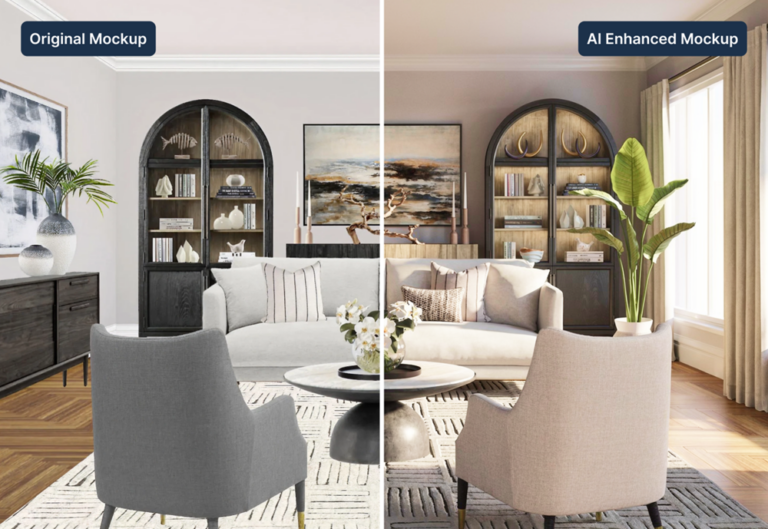Floor planning is a critical part of the design process, which makes a great floor planning tool a must-have in any interior designer’s arsenal. Whether you need a simpler planning process or feel it’s time to elevate client deliverables, Floorplanner and SketchUp are both solid software options to consider. However, these platforms also have significant differences which are worth exploring.
We’re here to help you choose the right platform for your interior design business. Let’s dig into the details, including top features, pricing plans, customer support, and user reviews.
Table of Contents
What are the main differences between Floorplanner and SketchUp?
Floorplanner and SketchUp are both used for floor plan creation, but they offer different features and serve different audiences. Floorplanner is designed for homeowners but offers upgrade credits and subscriptions for professionals. SketchUp is built specifically for professional use.
SketchUp is a more robust tool than Floorplanner. It offers a long list of helpful features for professionals, while Floorplanner is more limited in this area.
Another clear difference is sharing capabilities with clients. Floorplanner provides a shareable link for you to send to clients. This link doesn’t require any account creation or downloading on the receiving end.
With SketchUp, you can send final projects to clients as online links or as PDFs. You can also have clients create an account to collaborate with you with Trimble Connect. This lets you keep all design-related client communication in one place, and gives your clients the ability to comment on live designs. However, it does require your client to create their own account.
The pricing plans are different, but one is not necessarily more expensive than the other. Floorplanner offers a paid plan and a free plan. The free plan is not suitable for interior designers because the designs are watermarked and only one floor plan is allowed per account. SketchUp doesn’t offer a free plan, but it does have three paid plans at various price points.
Lastly, you’ll find that SketchUp is a more popular choice among professional interior designers when compared to Floorplanner. There are more online reviews, tips, and tricks for using SketchUp as an interior designer (along with a more robust customer support system). This can provide peace of mind as you sign up for a new subscription, as well as make the platform easier to learn and master.
Floorplanner VS SketchUp: Features
Floorplanner is mainly used for what its name suggests—creating floor plans. You can use the platform for a few other pieces of the design process, such as product sourcing, moodboard creation, and 3D rendering with adjustable backgrounds and light settings.
Here’s a look into Floorplanner’s features list:
- Product library
- Moodboards
- 2D and 3D floor plans
- 3D rendering, walkthroughs, and 360 views
- Shareable link (no client account creation necessary)
SketchUp offers similar features, but with more elevated functionalities. Some of the top features for interior designers include:
- Moodboards
- 3D Modeling
- Push/Pull Tool for turning 2D shapes into 3D
- Access free, user-generated 3D models via the 3D Warehouse
- Extensive plugins and extensions, including rendering options
- Add custom materials, layers, and textures
- Tools for measurement, dimensioning, and annotations
- Section cuts and plan views
- Geolocation for more accurate lighting and appearances
- Animation and walkthroughs (including virtual and augmented reality)
- Client collaboration and sharing (via links, file import/export, or Trimble Connect accounts)
Floorplanner VS SketchUp: Pricing
Floorplanner offers a free plan (Basic), but it doesn’t include the features professional interior designers need. The paid (Pro) subscription costs $29 per month.
SketchUp offers three paid plans: Go for $119 per year, Pro for $349 per year, and Studio for $749 per year. A free plan is available, but it has fewer features and is designed for non-professional users. You can try any plan for 7 days at no cost before starting your subscription.
Floorplanner VS SketchUp: Online Reviews
Floorplanner has 4.2 out of 5 stars on Capterra and 4.5 out of 5 stars on G2. These ratings are based on 25 reviews and 2 reviews respectively.
SketchUp has over 1000 reviews on both Capterra and G2, with both sites showing a rating of 4.5 out of 5 stars.
Floorplanner VS SketchUp: Customer Support
Floorplanner doesn’t offer immediate support via phone call or chat. They do have an online contact form, which they state will be answered as soon as possible.
Floorplanner also offers self-guided customer support. These resources include a downloadable PDF manual, an extensive FAQ section, and free weekly webinars.
SketchUp offers email and phone support to SketchUp Pro subscribers. Their online support resources include FAQs, a help center, troubleshooting guides, and video tutorials. You can use SketchUp Campus to learn more about the platform through video courses. And for any other support needs not solved with the resources above, you can turn to the highly-active SketchUp community forum.
Frequently asked questions
Floorplanner’s Basic account is free. It offers limited functionality and likely won’t be able to serve you as a professional interior designer. The free plan can, however, be a good way to get a feel for the platform before signing up for a subscription. You can also use upgrade credits to try features only available in paid plans.
SketchUp and Floorplanner are both used for making floor plans. SketchUp is the more popular choice for interior designers, as it offers more features and increased customer support. Floorplanner offers a free plan, but tends to have similar costs compared to SketchUp once credits or the paid plan is accessed.
SketchUp is a great 3D modeling tool, but you can’t rely on it as your only interior design software. You’ll need something else for project management, client communication, quotes and invoices, payment processing, etc.
To help you find the best platform for your business, we’ve compiled lists of some of our favorites: find the top 29 interior design softwares here and the top 10 e-design softwares here.
If you love SketchUp, though, don’t feel like you need to move away from it. Consider combining it with an all-in-one interior design tool like DesignFiles to meet all of your design business software needs.
Ready to grow your interior design business? Learn more about DesignFiles, the top-rated platform for solo and small interior design firms.


![Top 7 Interior Design Project Management Software [2026 Guide]](https://blog.designfiles.co/wp-content/uploads/2024/06/AdobeStock_215623020-768x512.jpeg)